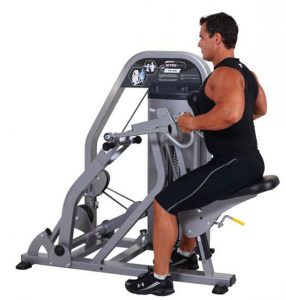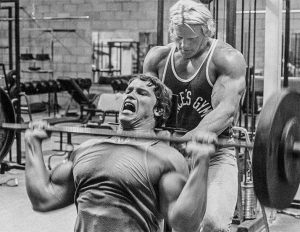Training to fatigue is a common training method used in bodybuilding circles to enhance muscular strength and growth. This theory is commonly associated with the founder of Nautilus exercise machines Arthur Jones [1]. In his over 30 years of writing, he has influenced a number of highly successful athletes to use failure training in their programs. Failure can be defined as the inability to complete a repetition in a full range of motion because of fatigue [1]. The idea for failure training is that it allows the lifter to maximise motor unit recruitment, therefore involving more muscle fibres. However, motor unit recruitment can be maximised without reaching failure [1]. Performing consecutive sets to failure has been shown to significantly reduce the number reps possible. This leads to an overall decrease in volume (sets x reps) which is a driving factor in hypertrophy and muscular strength gains.

Figure 1: Nautlius Gym Equipment (it sucks)
A recent meta-analysis by Davis et al. [1] looked at the effects of failure training on muscular strength. Based on the inclusion criteria, 8 studies were included in the meta-analysis with a total of 199 participants with 112 having resistance training experience and 87 without. Failure groups completed 1-4 sets of 4-12 reps at 6-10RM. Volume was controlled in 4 of the 8 studies and where volume was not controlled, 2 studies had greater training volume in the failure group while the other 2 had greater training volume in the non-failure group. Interventions lasted 6-14 weeks with 2-3 training sessions per week. Bench press and squat were used as 1RM strength tests.
What Was Found?
Non failure training was found to significantly increase muscular strength on the bench press (23.4%) and squat (24.2%) compared to failure training (22.8% & 22.9% respectively). When looking at training status, significantly greater improvements were found in trained participants following non failure training. Studies that controlled for volume showed no significant effect on strength between failure and non-failure training.
 What Does This Mean For You?
What Does This Mean For You?
If you are training to get stronger for your sport or in general, it is suggested to train shy of failure. According to Davis et al. [1], stopping 5 reps short of failure may have resulted in a level of motor unit recruitment similar to that achieved by failure training. It is important to look at training as a whole rather than in individual segments like if you should train to failure or not. Training to failure is going to take far longer to recover from than staying far away from failure. If you are a sport athlete, you need to have lower levels of fatigue so you can practise your sport or improve other aspects of your sports such as speed or conditioning. Strength training should not beat you up and leave you sore for days after to the point it negatively impacts your sporting practise. Sure, certain phases of your training you’ll have a higher volume of work where you will be sore and fatigued but adding extra stress through training to failure is not going to be beneficial to your overall performance or strength gains as evidenced by the above research. If you are a physique sport athlete and you get a kick out of training to absolute failure, then by all means cycling in periods of training to failure may kick start some extra muscle growth. As a sport athlete, keep your resistance training well away from failure to make long term progress in the gym as well as being fresher for subsequent training sessions.
